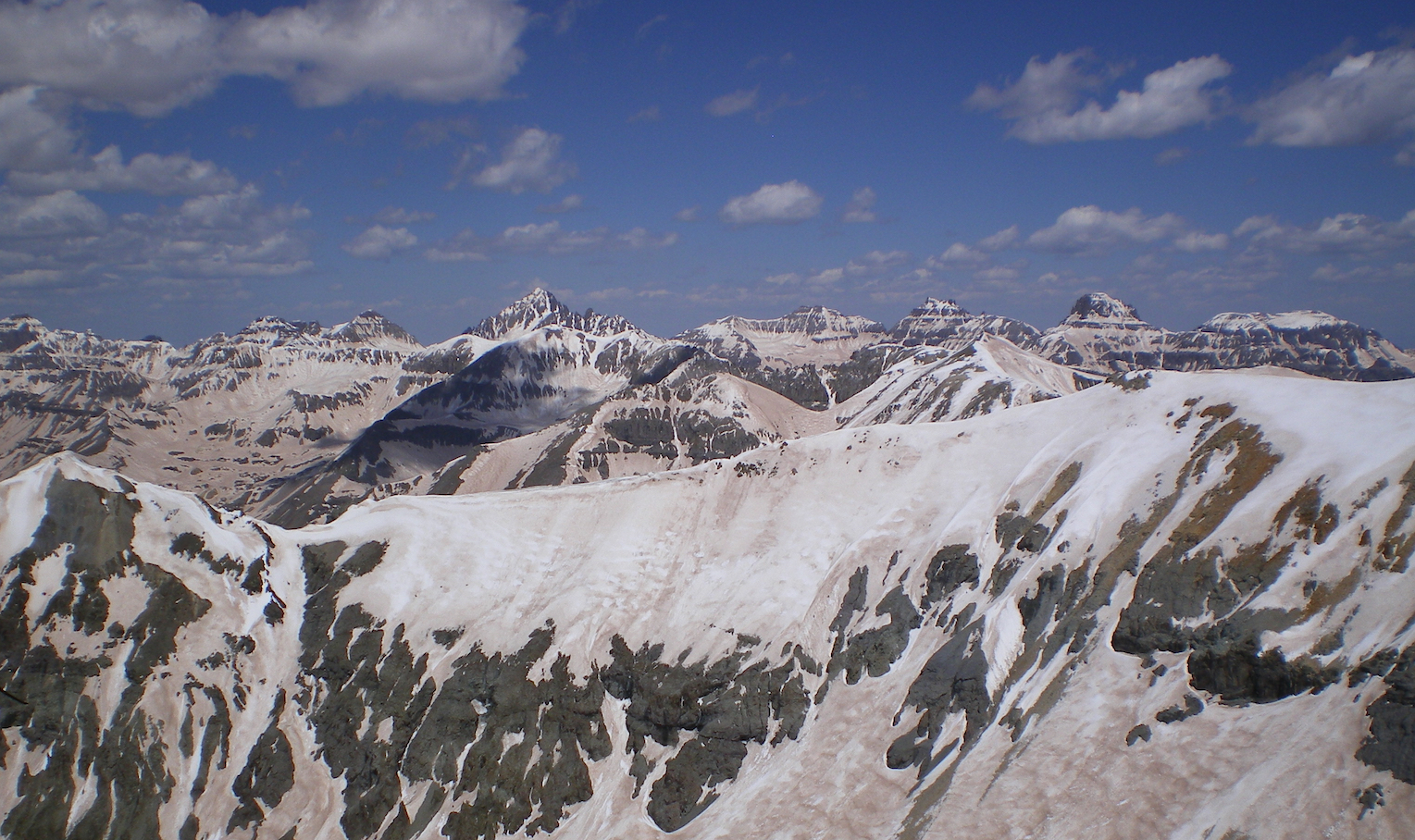
Dust plays a surprising role in controlling Rockies snowmelt
If you were to think about what would be the biggest factor controlling snowmelt in the springtime, you’d probably guess that warmer temperature is the major player. But a new study published in the journal Geophysical Research Letters has found that it’s dust, not spring warmth, that controls the pace of spring snowmelt around the head of the Colorado River.
This is the first study to focus on whether warmer air temperatures or a coating of dust on the snow has a stronger influence on spring runoff. The lead researcher, Tom Painter of NASA’s Jet Propulsion Laboratory, has been assessing the consequences of dust on snowmelt around the world. For this study, he and his colleagues assessed data on air temperature and dust in a mountain basin in southwestern Colorado from 2005 to 2014, as well as the streamflow from three major tributary rivers carrying snowmelt from these mountains to the Colorado River. This river basin spans roughly 246,000 square miles across seven states.
Their results revealed that, even in years with unusually warm spring air temperatures, the effects of dust dominated the pace of the spring runoff. Surprisingly, there was almost no statistical correlation between the pace of runoff and air temperature. “We found that when it’s clean, the rise to the peak streamflow is slower, and generally you get a smaller peak.” Painter says, “When the snowpack is really dusty, water just blasts out of the mountains.”
However, this doesn’t mean that air temperatures in the region should be ignored when considering streamflows and flooding. Temperature controls precipitation such as snow and rain, so ultimately it does determine how much snow is there to be melted in the first place. Painter also points out that “as air temperature continues to climb, it’s going to have more influence.
Windblown dust has also increased in the southwestern United States due to changing climate patterns and human land-use decisions. With rainfall decreasing in some regions and more human disturbances of land, winds are able to pick up more dusty soil to drop in the Colorado Rockies to the northeast. Historical analyses have found that there is an annual average of five to seven times more dust falling on the Rocky Mountain snowpack than there was prior to the mid-1800s.
While the negative impacts of dust in the air are well understood (i.e. reduced air quality), the impacts of dust once it has been deposited are not as well known. “Given the reliance of the western U.S. on the natural snow reservoir, and the Colorado River in particular, it is critical to evaluate the impact of increasing dust deposition on the mountain snowpack,” says McKenzie Skiles, co-author of the paper and an assistant professor at the University of Utah.
This same increase of dust in the snowpack is being seen in mountain ranges all over the world, including the Alps and Himalayas. The results of this study have not only an impact on the climate change currently happening in the U.S., but across the globe as well.
—
By Connor Ertz, Earth.com Staff Writer
Image Credit: NASA













